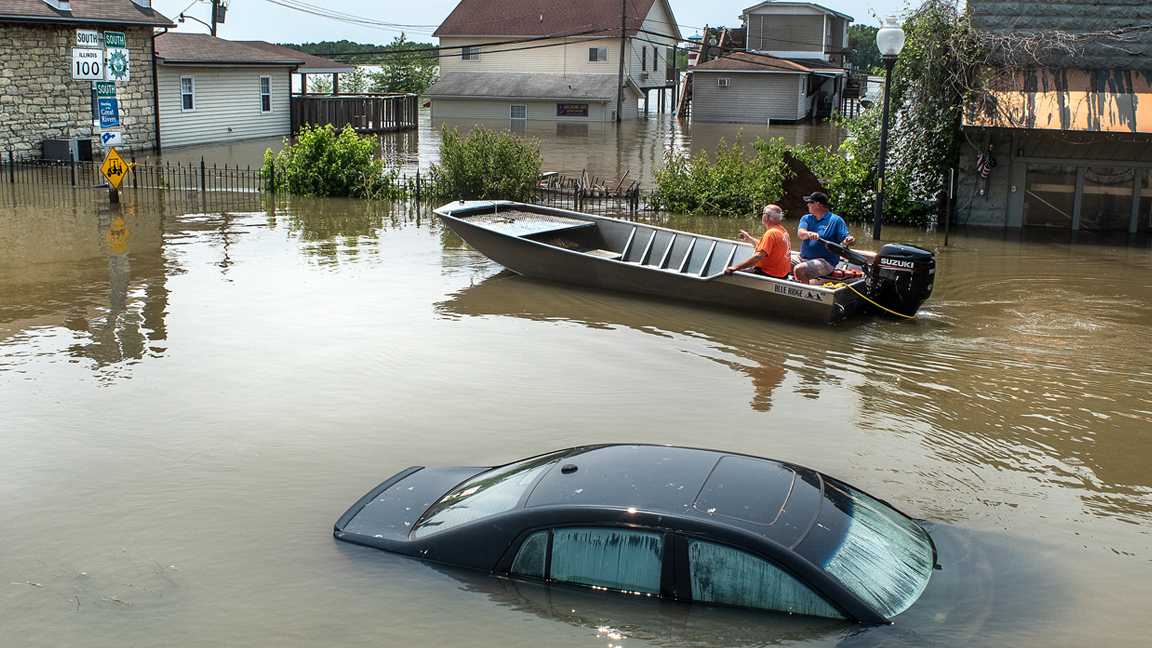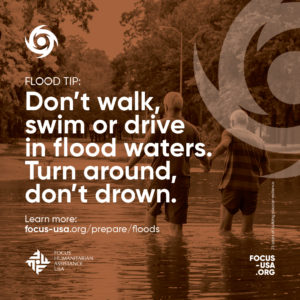Floods are one of the most common hazards in the United States, however not all floods are alike.


Floods are one of the most common hazards in the United States, however not all floods are alike. Some floods develop slowly, while others such as flash floods, can develop in just a few minutes and without visible signs of rain. Additionally, floods can be local, impacting a neighborhood or community, or very large, affecting entire river basins and multiple states.
Flash floods can occur within a few minutes or hours of excessive rainfall, a dam or levee failure, or a sudden release of water held by an ice jam. Flash floods often have a dangerous wall of roaring water carrying rocks, mud and other debris. Overland flooding, the most common type of flooding event typically occurs when waterways such as rivers or streams overflow their banks as a result of rainwater or a possible levee breach and cause flooding in surrounding areas. It can also occur when rainfall or snowmelt exceeds the capacity of underground pipes, or the capacity of streets and drains designed to carry flood water away from urban areas.
Be aware of flood hazards no matter where you live or work, but especially if you are in low-lying areas, near water, behind a levee or downstream from a dam. Even very small streams, gullies, creeks, culverts, dry streambeds or low-lying ground that appear harmless in dry weather can flood.
What would you do if your property were flooded? Are you prepared?
Even if you feel you live in a community with a low risk of flooding, remember that anywhere it rains, it can flood. Just because you haven’t experienced a flood in the past, doesn’t mean you won’t in the future. Flood risk isn’t just based on history; it’s also based on a number of factors including rainfall, topography, flood-control measures, river-flow and tidal-surge data, and changes due to new construction and development.
Flood-hazard maps have been created to show the flood risk for your community, which helps determine the type of flood insurance coverage you will need since standard homeowners insurance doesn’t cover flooding. The lower the degree of risk, the lower the flood insurance premium.
In addition to having flood insurance, knowing following flood hazard terms will help you recognize and prepare for a flood.
To prepare for a flood, you should:
Familiarize yourself with these terms to help identify a flood hazard:
Flood Watch – Flooding is possible. Tune in to NOAA Weather Radio, commercial radio or television for information.
Flash Flood Watch – Flash flooding is possible. Be prepared to move to higher ground; listen to NOAA Weather Radio, commercial radio or television for information.
Flood Warning – Flooding is occurring or will occur soon; if advised to evacuate, do so immediately.
Flash Flood Warning – A flash flood is occurring; seek higher ground immediately.
Americans at all income levels have experienced the challenges of rebuilding their lives after a disaster or other emergency. In these stressful times, having access to personal financial, insurance, medical and other records is crucial for starting the recovery process quickly and efficiently.
If a flood is likely in your area, you should:
If you must prepare to evacuate, you should do the following:
If you have to leave your home, remember these evacuation tips:
Your home has been flooded. Although floodwaters may be down in some areas, many dangers still exist. Here are some things to remember in the days ahead:
Hazards & Emergencies

Keep up to date with our latest news, tips and disaster preparedness updates by subscribing to our newsletter
Designed by GroupJKC – A Borderless Creative Agency
Thank you for subscribing. You can unsubscribe
at any time by clicking the link at the bottom
of any Spotlight newsletter.